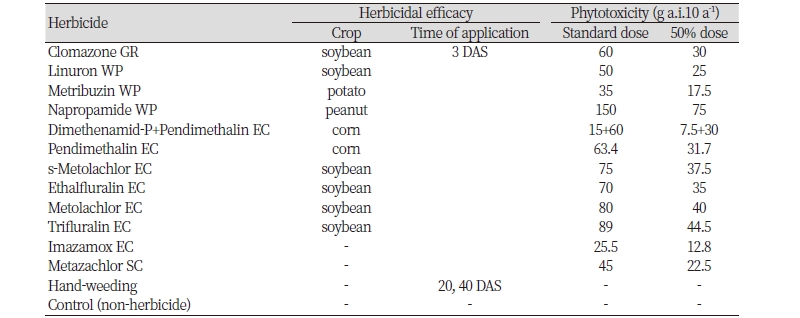Abstract
There is no herbicides registered for Adzuki beans in Korea. The objective of this research was to evaluate the efficacy of various pre-emergence (PRE) and post-emergence (POST) herbicides for the control of adzuki bean cultivation. Trials were conducted at two locations in 2015 and 2016. Experiments were arranged in a randomized complete block design with either ten PRE or one POST herbicides. Pre-emergence application of s-metolachlor and metazachlor showed relatively low phytotoxicity to adzuki bean. S-metolachlor showed 99% weed control at the recommended rate and 97% at the half application rates 30 days after seeding (DAS). Metazachlor showed 98% weed control at the recommended rate and 96% at the half application rates 30 DAS. However, both herbicides were not effective to Digitaria sanguinalis and Portulaca oleracea. The herbicides, which was low phytotoxicity but not efficacy of chemicals, were napropamide, metribuzin, and trifluralin. Systematic treatment is needed to control gramineous weeds during growth. Post-emergence herbicides showed no external phytotoxicity for adzuki bean were clethodim.
Figures & Tables



